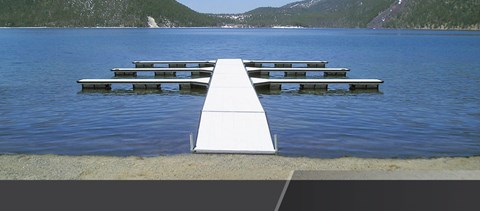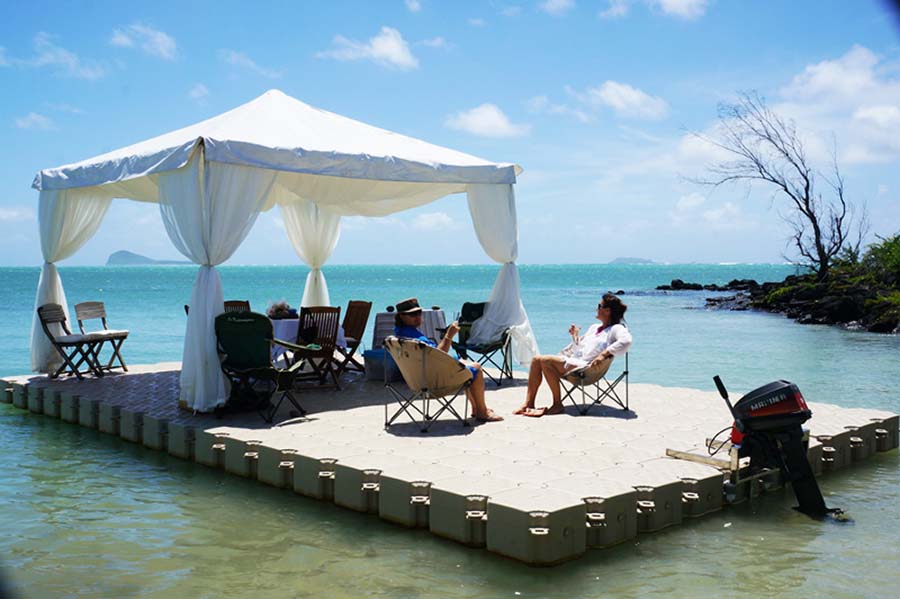Crafting Customized Solutions: Why a Floating Dock Builder is Necessary for Unique Needs
Crafting Customized Solutions: Why a Floating Dock Builder is Necessary for Unique Needs
Blog Article
Upgrade Your Waterfront With Durable Floating Docks
Upgrading your waterside with sturdy floating docks can substantially boost both functionality and appearances, giving a versatile option for different water activities. With a range of materials offered, including low-maintenance choices and standard timber, picking the right dock can complement your personal style and satisfy functional demands.
Advantages of Floating Docks
Floating docks offer a multitude of benefits that improve their appeal for numerous maritime applications. Unlike conventional fixed docks, floating docks rise and loss with the tide, ensuring constant ease of access for watercrafts and watercraft no matter of environmental problems.
Furthermore, floating docks are easier to transfer and set up, giving versatility for seasonal or temporary usage. Their modular layout permits modification to fit particular demands, whether for private marinas, property waterfronts, or industrial applications.
Moreover, floating docks develop minimal disturbance to the marine environment, protecting neighborhood ecosystems and decreasing the chance of disintegration. They also supply boosted safety and stability for individuals, as their buoyant nature provides a more flexible surface than inflexible structures.
Furthermore, floating docks can help with a diverse range of tasks, such as fishing, swimming, and recreational boating, making them a beneficial asset for waterfront growth. Their versatility and functionality make floating docks a recommended option for a selection of marine jobs.
Picking the Right Materials
Choosing proper products for floating docks is vital to their longevity, performance, and overall effectiveness. When choosing materials, consider factors such as ecological direct exposure, upkeep needs, and architectural stability. Typical materials include timber, plastic, light weight aluminum, and composite alternatives, each offering distinctive benefits and downsides.
Wood, while aesthetically pleasing, requires routine maintenance to avoid rot and decay. Pressure-treated timber can improve longevity, yet it may still give in to water damage in time. Plastic floats, typically made from high-density polyethylene, are resistant to deterioration and call for very little upkeep, making them an eye-catching option for low-maintenance applications.
Aluminum is another sensible choice, known for its toughness and lightweight residential properties. It is resistant to corrosion and can stand up to severe climate condition, although it may be a lot more costly than various other materials. Compound materials combine the very best qualities of timber and plastic, providing a low-maintenance and durable alternative that simulates the appearance of timber without the associated disadvantages.
Ultimately, the option of material must align with the meant usage, environmental factors to consider, and budget restraints, guaranteeing a long lasting and functional floating dock that fulfills your specific requirements.
Installation Process Review
The successful setup of a drifting dock counts on mindful planning and implementation, ensuring that it operates properly in its intended atmosphere. The primary step entails evaluating website problems, including water depth, coastline attributes, and prevailing weather condition patterns, which will notify the dock style and anchoring system.
Adhering to the site assessment, the next stage is to prepare the floating dock elements. This consists of putting together the framework, protecting drifts, and affixing any kind of required equipment. It is essential to guarantee that all connections are water-resistant and robust to endure aquatic problems.
As soon as the dock is put together, the installation procedure commences with positioning the dock in the water. This can entail a crane or various other lifting tools, particularly for bigger structures. Appropriate placement is necessary for functionality and safety.

Maintenance Tips for Long Life
Normal maintenance is important for making sure the durability and ideal performance of a floating dock. To accomplish this, begin with routine inspections a minimum of twice a year, concentrating on the integrity of the dock's structure, consisting of the flotation tools and connecting equipment. Seek indications of wear, deterioration, or damage, and attend to any type of concerns quickly to stop additional wear and tear.
Cleaning is one more critical aspect of upkeep. Remove particles, algae, and barnacles from the dock's surface to avoid unsafe problems and preserve aesthetic charm. Use a mild detergent and a soft brush to stay clear of harming the dock's products.
Furthermore, guarantee that the dock is properly anchored and safeguarded to stand up to seasonal modifications in water degrees and climate condition. Examine the anchoring system for security and make changes as essential.
Enhancing Your Outdoor Visual
To create an aesthetically attractive outdoor have a peek at these guys area, including a drifting dock can substantially enhance the overall visual of your waterside building. Floating docks are not just practical however can likewise offer as a striking centerpiece that matches the natural surroundings - floating dock builder. Available in numerous materials and styles, these docks can be customized to match your building's building design and landscape
The enhancement of attractive aspects, such as incorporated lights or elegant railings, better boosts the dock's aesthetic charm. Take into consideration utilizing natural wood surfaces, which blend perfectly with the atmosphere, or selecting modern-day materials like aluminum or composite outdoor decking that offer a smooth, contemporary look.
Purposefully positioning planters or seating areas on or around the dock can create inviting spaces that encourage relaxation and satisfaction of waterside views. In addition, including colors and structures that balance with your landscape will create a natural aesthetic throughout your exterior area.

Verdict

Updating your waterside with resilient floating docks can substantially improve both performance this content and appearances, supplying a versatile remedy for different water tasks. Unlike conventional fixed docks, floating docks increase and autumn with the tide, making sure consistent accessibility for boats and watercraft no matter of environmental conditions.Selecting ideal materials for floating docks is important to their durability, efficiency, and total effectiveness.Once the dock is constructed, the installation process starts with placing the dock in the water.In summary, floating docks offer many benefits, consisting of flexibility to water degree changes and a range of material alternatives.
Report this page